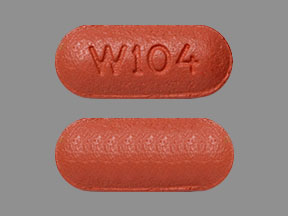Neratinib Side Effects
Applies to neratinib: oral tablet.
Serious side effects of neratinib
Along with its needed effects, neratinib may cause some unwanted effects. Although not all of these side effects may occur, if they do occur they may need medical attention.
Check with your doctor immediately if any of the following side effects occur while taking neratinib:
More common side effects
Less common side effects
Rare side effects
- bloody urine
- increased blood pressure
- increased thirst
- itching, pain, redness, swelling, tenderness, or warmth on the skin
- loss of appetite
- lower back or side pain
- nausea
- raised, firm, bright red patches of skin on the arm or leg
- stomach pain
- swelling of the face, fingers, or lower legs
- trouble breathing
- vomiting
- weight gain
Other side effects of neratinib
Some side effects of neratinib may occur that usually do not need medical attention. These side effects may go away during treatment as your body adjusts to the medicine. Also, your health care professional may be able to tell you about ways to prevent or reduce some of these side effects.
Check with your health care professional if any of the following side effects continue or are bothersome or if you have any questions about them:
More common side effects
- belching
- bladder pain
- bloody nose
- bloody or cloudy urine
- decreased appetite
- decreased weight
- difficult, burning, or painful urination
- discoloration of the fingernails or toenails
- dry skin
- frequent urge to urinate
- heartburn
- indigestion
- muscle spasms
- stomach discomfort, upset, or pain
- swelling or inflammation of the mouth
Less common side effects
- deep cracks, grooves, or lines in the skin
- dry mouth
For healthcare professionals
Applies to neratinib: oral tablet.
General adverse events
The most common adverse reactions (more than 5%) were diarrhea, nausea, abdominal pain, fatigue, vomiting, rash, stomatitis, decreased appetite, muscle spasms, dyspepsia, increased AST or ALT, nail disorder, dry skin, abdominal distention, decreased weight, and urinary tract infection.[Ref]
Gastrointestinal
- Very common (10% or more): Diarrhea (95%), nausea (43%), abdominal pain (36%), vomiting (26%), stomatitis (14%), dyspepsia (10%)
- Common (1% to 10%): Abdominal distention, dry mouth[Ref]
Other
- Very common (10% or more): Fatigue (27%)[Ref]
Dermatologic
- Very common (10% or more): Rash (18%)
- Common (1% to 10%): Nail disorder, rash, skin fissures[Ref]
Metabolic
- Very common (10% or more): Decreased appetite (12%)
- Common (1% to 10%): Decreased weight, dehydration[Ref]
Musculoskeletal
- Very common (10% or more): Muscle spasms (11%)[Ref]
Genitourinary
- Common (1% to 10%): Urinary tract infection[Ref]
Hepatic
- Common (1% to 10%): Increased ALT, increased AST[Ref]
Respiratory
- Common (1% to 10%): Epistaxis[Ref]
Cardiovascular
- Frequency not reported: Hypotension[Ref]
Renal
- Frequency not reported: Renal failure[Ref]
References
1. (2017) "Product Information. Nerlynx (neratinib)." Puma Biotechnology, Inc.
Frequently asked questions
- What’s the difference between tucatinib and neratinib?
- When does diarrhea start when taking Nerlynx?
- Is Nerlynx (neratinib) a chemo drug?
- Can you drink alcohol with Nerlynx?
- How long do you take Nerlynx for?
- Does Nerlynx cause hair loss?
- How does Nerlynx (neratinib) work?
- How do you take Nerlynx?
More about neratinib
- Check interactions
- Compare alternatives
- Reviews (27)
- Dosage information
- During pregnancy
- Drug class: EGFR inhibitors
- En español
Patient resources
Other brands
Professional resources
Other brands
Related treatment guides
Further information
Neratinib side effects can vary depending on the individual. Always consult your healthcare provider to ensure the information displayed on this page applies to your personal circumstances.
Note: Medication side effects may be underreported. If you are experiencing side effects that are not listed, submit a report to the FDA by following this guide.

